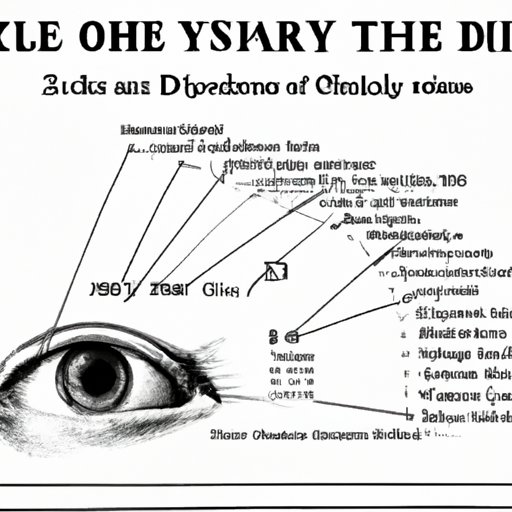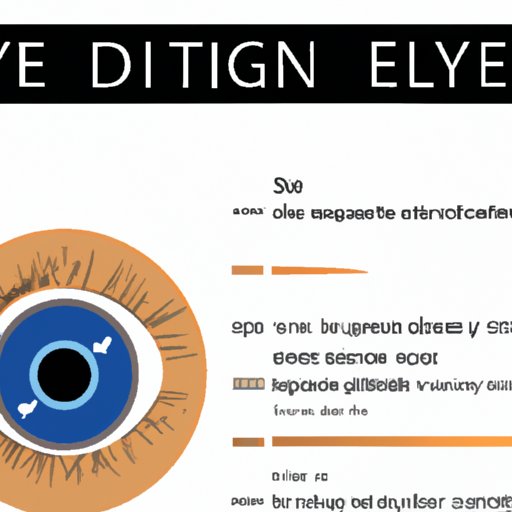I. Introduction
Eye dilation is a common procedure that involves the use of eye drops to enlarge the appearance of the black part of the eyes, known as the pupils. This allows doctors to see the back of the eye more clearly in order to diagnose and monitor certain conditions. In this article, we will explore the medical reasons for eye dilation, the experience of getting your eyes dilated, the history of eye dilation, the social implications of eye dilation, and the psychology of eye dilation.
II. The Medical Reasons for Eye Dilation
Eye dilation is generally performed by eye doctors or ophthalmologists to aid in the diagnosis of a variety of conditions. By dilating the eyes, doctors can more closely examine the retina, optic nerve, and blood vessels at the back of the eye. Some common reasons for eye dilation include:
- Diabetic retinopathy
- Glaucoma
- Macular degeneration
- Retinal detachment
- Hypertension
While eye dilation is generally safe, there are some potential risks and side effects associated with the procedure. These can include temporary vision impairment, light sensitivity, and discomfort. It’s important to discuss any concerns with your doctor before undergoing the procedure.
III. The Experience of Getting Your Eyes Dilated
The process of getting your eyes dilated typically involves receiving eye drops that contain special medication. The drops may sting or cause a temporary burning sensation in the eyes. The dilation process can take between 20-30 minutes, during which time your eyes will gradually become more sensitive to light. You may also experience blurry vision and difficulty focusing on nearby objects.
After the dilation process is complete, it’s important to wear sunglasses and avoid driving until the effects wear off. The amount of time it takes for your eyes to return to normal can vary from person to person, but it’s common for the effects to last up to several hours.
Patients often wonder whether the process is painful or whether it affects vision. While it can cause some discomfort and temporary blurred vision, eye dilation is generally considered a safe and routine procedure.

IV. The History of Eye Dilation
The use of eye dilation for medical purposes dates back to ancient times, where the Greeks and Romans used various substances to enlarge pupils for cosmetic purposes. The practice of eye dilation was later used in the 1600s for medical purposes, and further advancements were made through the early 1900s.
One of the pioneers of modern eye dilation was the German physician Carl Koller, who discovered the use of cocaine as a local anesthetic for eye surgery. Over time, newer and safer substances were developed for use in eye drops, allowing for a more comfortable and efficient dilation process.
V. The Social Implications of Eye Dilation
While eye dilation is generally safe and routine, it can have social implications. The dilation process can severely limit driving ability, making it difficult for people to get to and from appointments. In addition, visible eye dilation may attract unwanted attention or result in judgments from others.
For those who are concerned about the social implications of eye dilation, it’s important to plan ahead and make arrangements for transportation as needed. Additionally, it’s important to remember that eye dilation is a common procedure used for medical purposes and there is no need to feel ashamed or embarrassed by it.
VI. The Psychology of Eye Dilation
Eye dilation can have a psychological impact on patients, particularly those who experience anxiety or discomfort during the process. It’s important to communicate any fears or concerns with your doctor ahead of time so that they can help you manage these feelings.
Some tips for managing anxiety and discomfort during the dilation process include deep breathing exercises, distracting yourself with music or a book, and practicing relaxation techniques like meditation or yoga.
VII. Frequently Asked Questions about Eye Dilation
Why do they dilate your eyes?
Eye dilation is performed to aid in the diagnosis of a variety of conditions by allowing doctors to see the back of the eye more clearly.
How often is eye dilation recommended?
The frequency of eye dilation varies depending on your age and medical history. Your doctor will recommend a schedule that works best for you.
Is eye dilation safe during pregnancy?
While eye dilation is generally considered safe during pregnancy, it’s important to discuss any concerns with your doctor before undergoing the procedure.
VIII. Conclusion
Eye dilation is a common procedure that is performed to aid in the diagnosis and management of a variety of conditions. While the dilation process can be uncomfortable and may have social implications, it is generally considered safe and routine. If you have further questions or concerns about eye dilation, it’s important to seek medical advice from your doctor.
